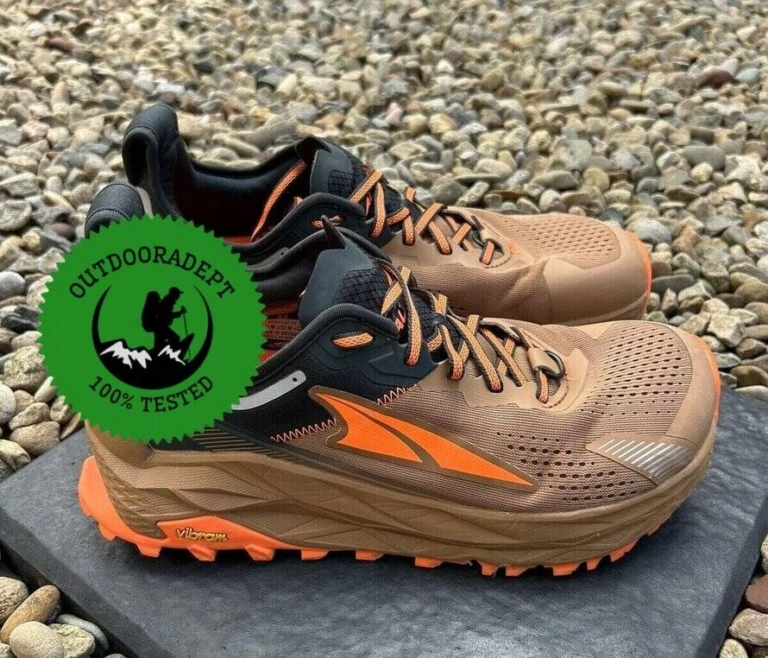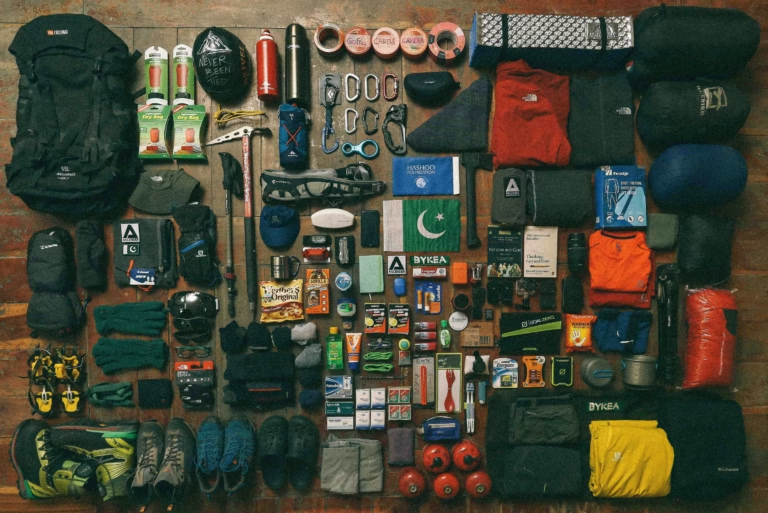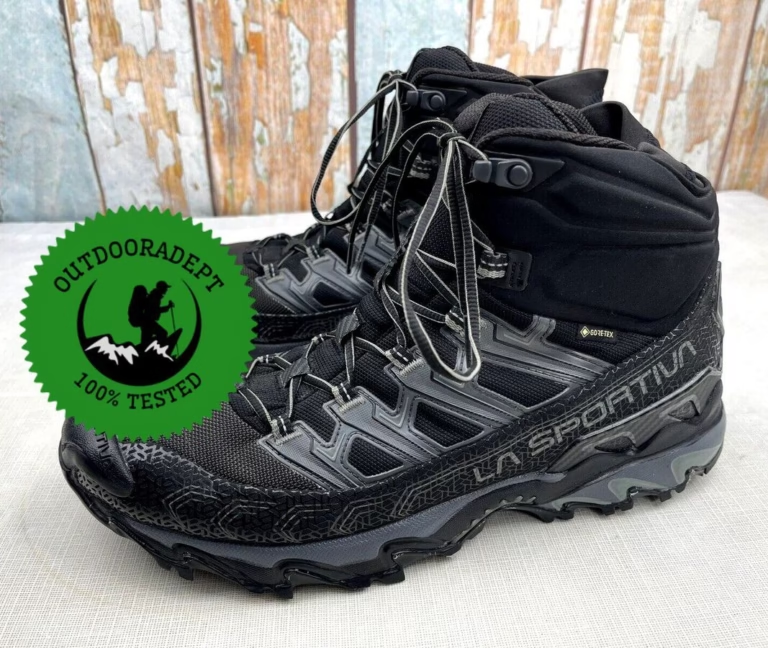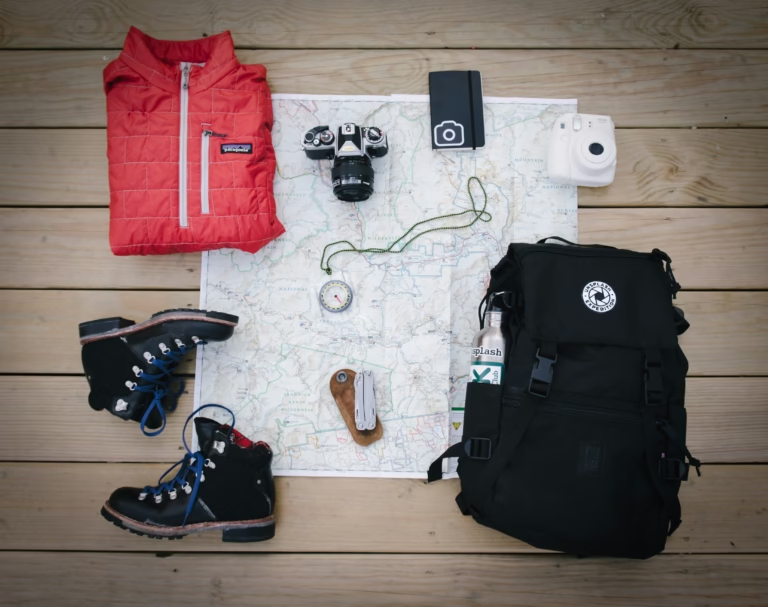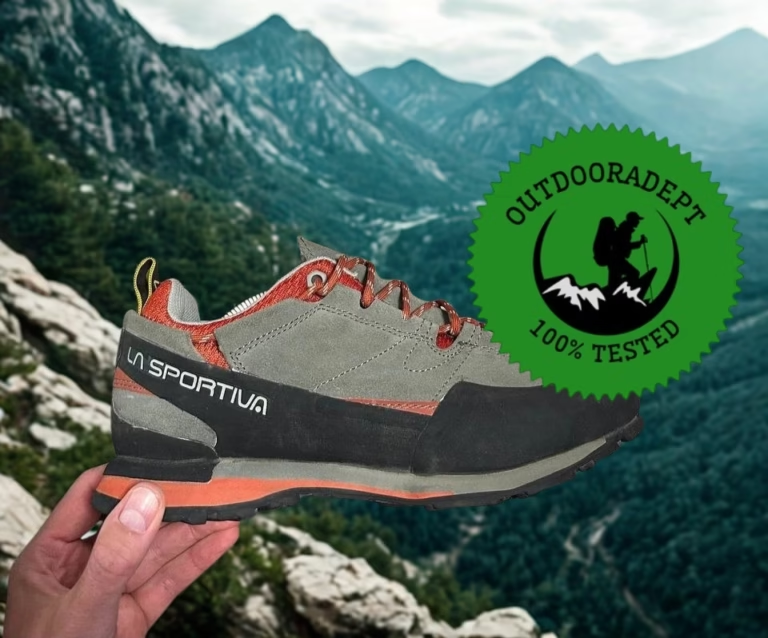Taking to the trails in summer can be rough. The high temps and blazing sun might sneak up on you, leaving you hot and thirsty.
In a 2023 study, the American Geophysical Union found that the Grand Canyon experiences about 80 heat-related incidents each year. Due to global warming, it’s expected that this number could go up by 29%–137% by 2100.
Talking about going summer hiking unprepared – that’s no longer an option!
Today, we discuss the essential clothing and gear for a comfortable and enjoyable hiking experience in the summer.
From moisture-wicking clothing to sturdy hiking boots, I’ll cover everything you need to know to stay safe and comfortable on the trails during the warmer months.
What Do I Wear on a Summer Hike?
For a summer hike, opt for moisture-wicking clothing like a lightweight, breathable shirt and quick-drying shorts or pants. Wear moisture-wicking socks and sturdy hiking shoes. Don’t forget a hat, sunglasses, sunscreen, and a backpack with water and snacks.
That’s the short version. Now let’s talk technicalities.
Upper Body Clothing Choices
When selecting upper body clothing for summer hikes, prioritize lightweight, moisture-wicking fabrics that allow sweat to evaporate freely. This helps regulate body temperature and prevents overheating. Here’s what I usually wear:
- T-shirts: I’ve found that loose-fitting T-shirts made from synthetic fabrics like polyester or nylon work great for summer hikes. These materials are highly breathable and quick-drying and will keep you cool and comfortable throughout the hike.
- Long sleeves: While short sleeves may seem like the obvious choice for hot weather, long sleeves can offer additional protection from the sun’s harmful UV rays. I usually pack a lightweight long-sleeved shirt made from UPF-rated fabrics that block out at least 95% of UV radiation. This has helped me avoid sunburns and skin damage.
- Vests: I’ve discovered that vests are versatile additions to my summer hiking wardrobe. They can provide extra sun protection for the shoulders, especially during midday when the sun’s intensity is highest. I look for vests made from breathable, moisture-wicking fabrics for maximum comfort.
- Light jackets: I also pack a light jacket, such as a windbreaker or fleece pullover, for my summer hikes. This has come in handy when temperatures drop unexpectedly or if the weather turns windy. Lightweight, water-resistant jackets that pack down easily are a good option.
Lower Body Clothing Choices
The choice between shorts and pants for summer hikes depends on personal preference and trail conditions. However, there are a few key considerations:
- Hiking shorts: I usually opt for hiking shorts made from lightweight, quick-drying fabrics like nylon or polyester. These materials are comfortable and breathable, keeping me cool and dry on the trail.
- Lightweight pants: I sometimes choose lightweight pants, such as convertible or zip-off pants, as these options offer more sun protection than shorts and can be rolled up or zipped off when temperatures rise.
- Gaiters: Gaiters, which fit over the ankles and lower legs, are particularly useful for hikes in dusty or brushy terrain. I wear gaiters when I know I’ll be hiking on trails with a lot of debris or where I might encounter ticks. They help prevent dirt and debris from entering my shoes, keeping my feet clean and comfortable.
Footwear and Socks
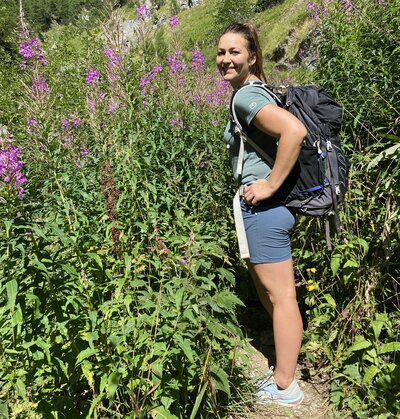
Proper footwear is essential for hiking, regardless of the season. For summer hikes, lightweight, breathable hiking boots or trail runners are ideal.
I prefer trail runners in the summer because they offer a comfortable fit and good traction.
I also wear a moisture-wicking pair of socks on my summer hikes to prevent blisters and keep my feet cool and dry.
Headwear
A wide-brimmed hat or sun hat is crucial for protecting your face, ears, and neck from the sun’s harmful UV rays. I like hats because they keep the sun off my face and help me regulate my body temperature.
Sometimes, I choose a bandana, but I often end up wearing it around my neck as a scarf or using it to wipe sweat off my face.
Rain Gear
Even during the summer, unexpected showers can occur, that’s why I pack my backpack with a lightweight rain jacket or poncho. This has saved me from getting soaked on more than one occasion.
My advice is to look for a waterproof and breathable material that will keep you dry and comfortable without overheating.
Why Is Layering Important?
Layering is an important technique for adjusting your body temperature while hiking, especially during the summer. By wearing different layers of clothing, you can add or remove layers as needed to stay comfortable and protected from the elements.
- Base layer: This is the closest layer to your skin and helps wick away sweat to keep you cool. Choose a base layer made from breathable, moisture-wicking fabric.
- Mid-layer: The mid-layer provides insulation and helps regulate body temperature. It should be made from a thicker, warmer fabric, such as fleece or wool.
- Outer layer: Finally, the outer layer protects you from the elements, such as wind, rain, or snow, and is often waterproof.
What are the Best Materials to Wear for Summer Hiking?
When it comes to summer hiking, lightweight fabrics are your best friends. These materials allow for excellent breathability, allowing sweat to evaporate quickly and prevent overheating. Here are a few of my top picks:
- Polyester: This synthetic fabric is incredibly lightweight, quick-drying, and highly breathable. It’s perfect for summer hiking tops, bottoms, and even base layers [1].
- Nylon: Similar to polyester, nylon is another synthetic fabric that excels in breathability and moisture-wicking properties. It’s often used in lightweight jackets and pants for summer hiking.
- Merino wool: While wool might not be the first material that comes to mind for summer hiking, merino wool is actually a great choice for its temperature-regulating properties. It can keep you warm in cool weather and cool in warm weather, making it a versatile option for all-season hiking.
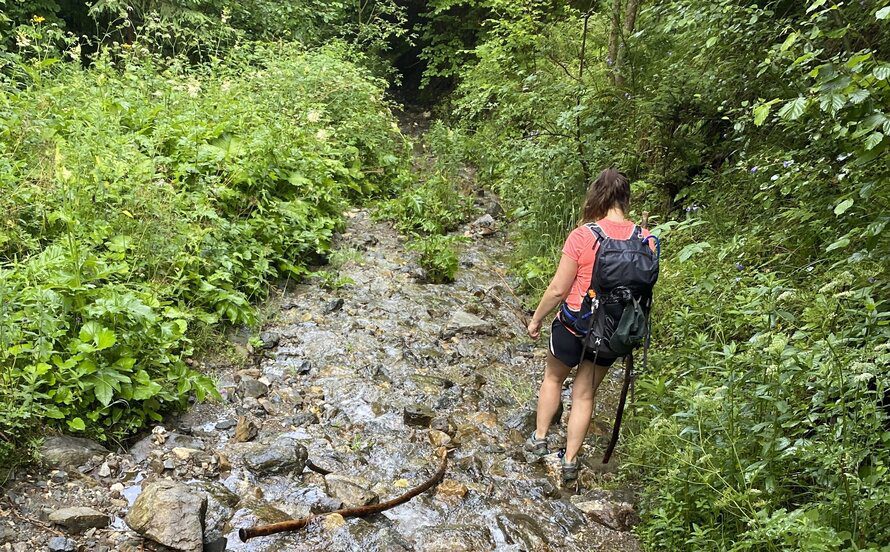
Extras to Carry During a Summer Hike
I take heat very seriously, so I always bring 4 items that can help me be prepared for anything that comes my way on my summer hikes. Yes, I am the kind of hiker who thinks that it’s always better to be overprepared than underprepared when it comes to outdoor activities.
- Sun protection: The sun’s rays can be particularly intense during summer hikes, so it’s crucial to protect yourself from sunburn. I choose sunglasses and a high-SPF sunscreen (30 or higher). This has helped me stay safe from the sun’s harmful rays and enjoy my hikes without the discomfort of sunburn.
- Water bottle: Staying hydrated is especially important in hot weather. Bring a reusable water bottle and drink plenty of water throughout your hike to avoid dehydration, which can lead to fatigue, headaches, and other problems.
- Bug repellent: Mosquitoes, ticks, and other biting insects are more prevalent in summer, so it’s important to use bug repellent to protect yourself from bites. I choose a repellent with DEET or picaridin and reapply it as needed.
- First aid kit: A small first aid kit can come in handy if you or someone else gets injured on the trail. Pack bandages, antiseptic wipes, pain relievers, and any other first aid supplies you may need. This minimal kit will help you deal with minor injuries on the trail and continue your hike without having to turn back.
Clothing-Related Tips for Hiking in Hot Weather
I’ve tested several hiking clothing options over the years. Some proved excellent, and some got me through hell. So, here’s some of the wisdom I got on the trails:
1. Invest in moisture-wicking underwear: Moisture-wicking underwear made from polyester, bamboo, or merino wool is essential for keeping your skin dry and comfortable, especially in hot weather. I hate when my underwear remains wet, as it can chafe and cause discomfort, so I am very careful when selecting this piece of clothing.
2. Utilize UPF-rated clothing: UPF (Ultraviolet Protection Factor)-rated clothing blocks the sun’s harmful ultraviolet rays, protecting your skin from sunburn. Choose clothing with a UPF rating of 30 or higher to safeguard yourself from the sun’s harmful effects [2].
3. Choose light-colored clothing: Light colors reflect sunrays, so some of the heat gets thrown back into the air instead of being absorbed into your body. Black is a big no for the summer and so are other dark shades.
4. Wear loose-fitting clothes: Tight-fitting clothing can trap heat and moisture, making you feel hotter and more prone to chafing. So next time you go hiking in the summer, leave your skinny-fit t-shirt at home.
Check our Trail Clothing Layering Tool
What Can Happen If You Hike Unprepared on Hot Weather?
No matter how fun, hiking in hot weather can pose some serious challenges if not prepared accordingly [3]. Here are some potential health risks to be aware of and how to avoid them:
- Dehydration: Dehydration is a major concern for hikers, especially in hot weather. When you sweat, you lose fluids and electrolytes, which can lead to a variety of symptoms, including fatigue, headache, dizziness, muscle cramps, and even heatstroke.
- Heat Exhaustion: Heat exhaustion is a more severe consequence of dehydration. It occurs when your body’s temperature regulation system becomes overwhelmed, and you experience a core body temperature of 102°F or higher. Symptoms of heat exhaustion include heavy sweating, pale or flushed skin, dizziness, nausea, and vomiting.
- Heat Stroke: Heat stroke is the most serious heat-related illness and can be fatal. It occurs when your body’s temperature regulation system fails and your core body temperature rises to 104°F or higher. Symptoms of heatstroke include hot, red, dry skin; rapid pulse; headache; confusion; and seizures. If you experience these symptoms, call 911 immediately.
- Sunburn: Sunburn is a common problem for hikers, especially in hot weather. It occurs when your skin is exposed to ultraviolet (UV) rays from the sun for too long. Sunburn can cause pain, redness, swelling, and blistering. It can also increase your risk of skin cancer.
- Blisters and Chafing: Blisters and chafing are common problems for hikers, especially in hot weather. Even if they don’t pose a serious threat, they will make your hike uncomfortable.
Tip: To prevent heat exhaustion, take breaks in shaded areas, especially during the hottest part of the day.
When Is It Too Hot to Hike?
Hiking in hot weather can be dangerous, so it’s important to know when it’s too hot to go. In general, it’s best to avoid hiking when the temperature is above 90 degrees Fahrenheit (32 degrees Celsius).
However, even if the temperature is below 90 degrees, it’s important to be aware of the heat index, which is a measure of how hot it feels to your body. The heat index can be found on weather forecasts. If the heat index is above 90 degrees Fahrenheit (32 degrees Celsius), it’s too hot to hike.
References:
- https://nicestuffclothing.com/blogs/news/the-science-behind-breathable-fabrics
- https://www.rei.com/learn/expert-advice/sun-protection.html
- https://app.croneri.co.uk/feature-articles/risk-assessment-and-outside-work-hot-weather-0



